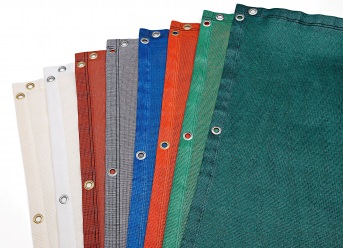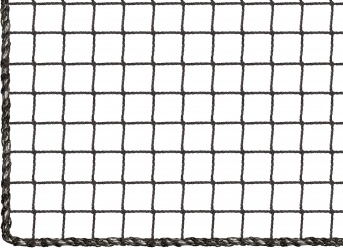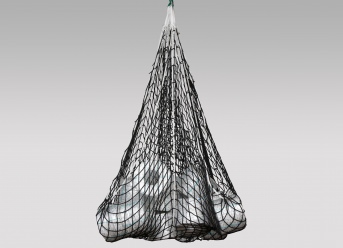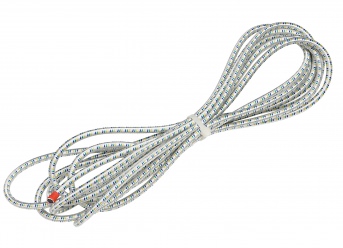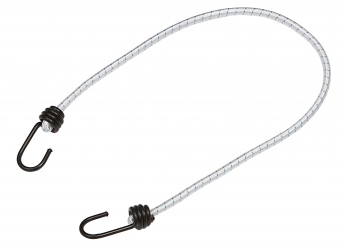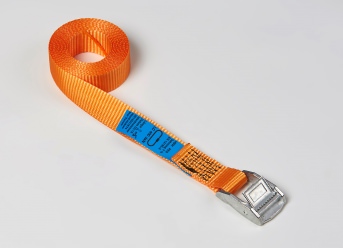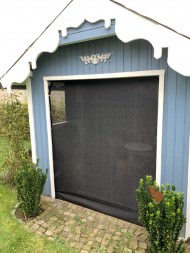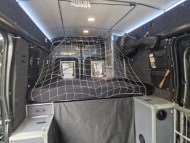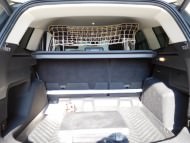Load Securing Nets & Cargo Nets
With the help of load securing nets, you can secure loads in cars, trailers or trailers from slipping and falling. By securing the cargo correctly, you also protect yourself and other road users from flying objects. Find out more about load securing nets and their purposes below.
Die sichere Beförderung von Gütern ist im Straßenverkehr von zentraler Bedeutung. Load securing nets offer a reliable solution to protect loads in transport vehicles, trailers and containers from slipping, falling and other hazards. By securing the transported goods correctly, you not only ensure the protection of your load, but also actively contribute to road safety. The following article will tell you everything you need to know about load securing nets, their possible uses and the applicable German road traffic regulations (StVO).

Sub-Categories
Load Securing Regulations
According to the German Road Traffic Regulations (StVO), the driver and owner of a vehicle are responsible for securing goods to be transported in such a way that they cannot fall over, slip or fall out during evasive or braking movements or emergency braking. If the load of a vehicle is inadequately secured, there is a risk of fines.
The responsibility for securing the load lies with the driver and owner of the vehicle. In the event of accidents with or due to inadequately secured loads, the loader is also liable. Locking bars, load securing nets and tarpaulins as well as tensioning and lashing straps are particularly suitable for securing loads.

Load Securing In Trucks
In trucks, load securing nets or cargo cover sheets are particularly suitable for securing cargo on open loading areas. A distinction is made here between load securing nets and cover nets. Load securing nets hold the goods to be transported, absorb the resulting forces and transfer them via webbing straps and lashing belts to the attachment points on the truck. Cover nets, on the other hand, cover the load and thus ensure that light cargo such as leaves does not fly away during the journey.
In the Safetynet365 store you can buy DEKRA-certified cover and load securing nets for flatbeds, trailers and co. in prefabricated sizes or individually made to measure.

Load Securing In Cars
The paragraph on load securing prescribed by the German Road Traffic Regulations (StVO) also applies to passenger cars. To prevent cargo such as luggage from slipping in the trunk or flying around during braking maneuvers, use a safety net. For example, you can attach the net to the cargo floor of the car using cross-tensioned lashing straps.
Load Securing On Trailers
Trailer nets and cover sheets are ideal for securing loads on trailers and flatbeds. Cover from Safetynet365 have the advantage that they not only secure the load on your trailer from slipping and falling out, but also protect it from wind and direct sunlight. For even better protection, lash down the load with tension belts in addition to the net. Trailer nets are used, for example, for bulky loads, are placed over the load and secured to the flatbed or trailer eyelets with tensioning lines.

Load Securing In Vans
As in a car or truck, you usually transport goods in a van within the vehicle. Here you use locking bars, tension belts and safety nets to secure the load. In some cases, there are fastening eyes on the walls or ceiling of the van to which you can attach cargo nets. Alternatively, you can spread the net over the load as in a car and fasten it to the loading floor.
Load Securing In Containers And Skips
Open containers and skips need a securing cover for transport in any case. Container nets and tarpaulins have the advantage that they adapt to the shape and height of the cargo thanks to their flexible material. The DEKRA-tested container nets from Safetynet365 comply with the valid EN standards and DIN regulations, thus offering the highest level of safety for securing the load of containers and are available in various material thicknesses, mesh sizes as well as individual sizes.

Popular Load Securing Nets
Cargo Nets Made To Measure
Safety nets for loads such as trailer nets, container nets as well as cargo cover sheets you buy in Safetynet365 store in different material diameters and mesh sizes depending on the planned use of the net. For the sizes of the safety nets, you can either choose the right one from the prefabricated sizes or let us make your net individually to measure for your vehicle. For a custom-made net, select the required rope diameter and mesh size and specify the desired length and width - use our dimension configurator.

Popular Cargo Nets Made To Measure
Heavy Cargo Nets
As an alternative to securing nets, you can also get reliable webbing nets at Safetynet365. These nets made of webbing are mainly used for securing heavy loads, where the attachment points are not exactly defined and lashing with tension belts or load securing nets is difficult. Cargo nets from Safetynet365 are distinguished by the GS test mark and the nets can be used both force-fitting and form-fitting. Matching tension belts are included in the set with our webbing nets.

Popular Heavy Cargo Nets
Transportation Nets For Loads
If goods cannot or should not be transported by vehicle, load transport nets are an option. The transport nets enclose the load and can thus be safely transported by air, for example, with a crane or helicopter. You can find transport nets in different dimensions and with the matching band hangers in the Safetynet365 store.

Popular Transportation Nets
Cords And Tension Belts For Load Securing
For fastening load securing nets use tensioning ropes and tensioning belts. In the Safetynet365 store you will find durable ropes made of tear-resistant material in various dimensions as well as stretchable rubber ropes optionally with metal hooks on both sides. Alternatively, use steel ropes from our store to fix safety nets for the long term. Also tension belts for lashing and tie-down are available in various strap widths in our range.

Popular Cords And Tension Belts
Accessories For Load Securing
Können oder sollen Güter nicht mit dem Fahrzeug transportiert werden, bieten sich Lastentransportnetze an. Die Transportnetze umschließen das Ladegut und können so sicher beispielsweise mit einem Kran oder Helikopter über den Luftweg transportiert werden. Lastentransportnetze in verschiedenen Abmessungen und mit den passenden Bandgehängen finden Sie im Schutznetze24-Shop.

Popular Accessories For Load Securing
Frequently Asked Questions
- What Is Meant By Form-fit Load Securing?
- Who Is Responsible For Ensuring That The Load Is Adequately Secured?
- Cargo Net - What Size?
A load is form-fitted secured if it rests against the load compartment boundaries on all sides. This includes both the side walls of the transport vehicle and the end wall. In the case of tight-fit cargo, the goods are loaded flush and without gaps - gaps can be closed here by filling material such as airbags or foam padding.
The driver and owner of the transport vehicle is responsible for ensuring that the load is adequately secured. He must secure the load in such a way that it does not slip or fall off during braking and evasive maneuvers. If loads are not adequately secured, there is a risk of fines.
Load securing nets are ordered in the actual size required - measure from attachment point to attachment point to determine. For cover nets, the height of the load must also be taken into account. As a rule of thumb, trailer nets and container nets should each be approx. 50 cm larger than the dimension of the loading area. If there is any uncertainty about the size of the net, for example because the load is higher than the side walls of the transport vehicle, we will also be happy to advise you. If required, we can make safety nets to measure for you at any time.
Sub-Categories
Our Benefits
Sub-Categories
modified eCommerce Shopsoftware © 2009-2025
Code & Implementation: Rehm Webdesign











